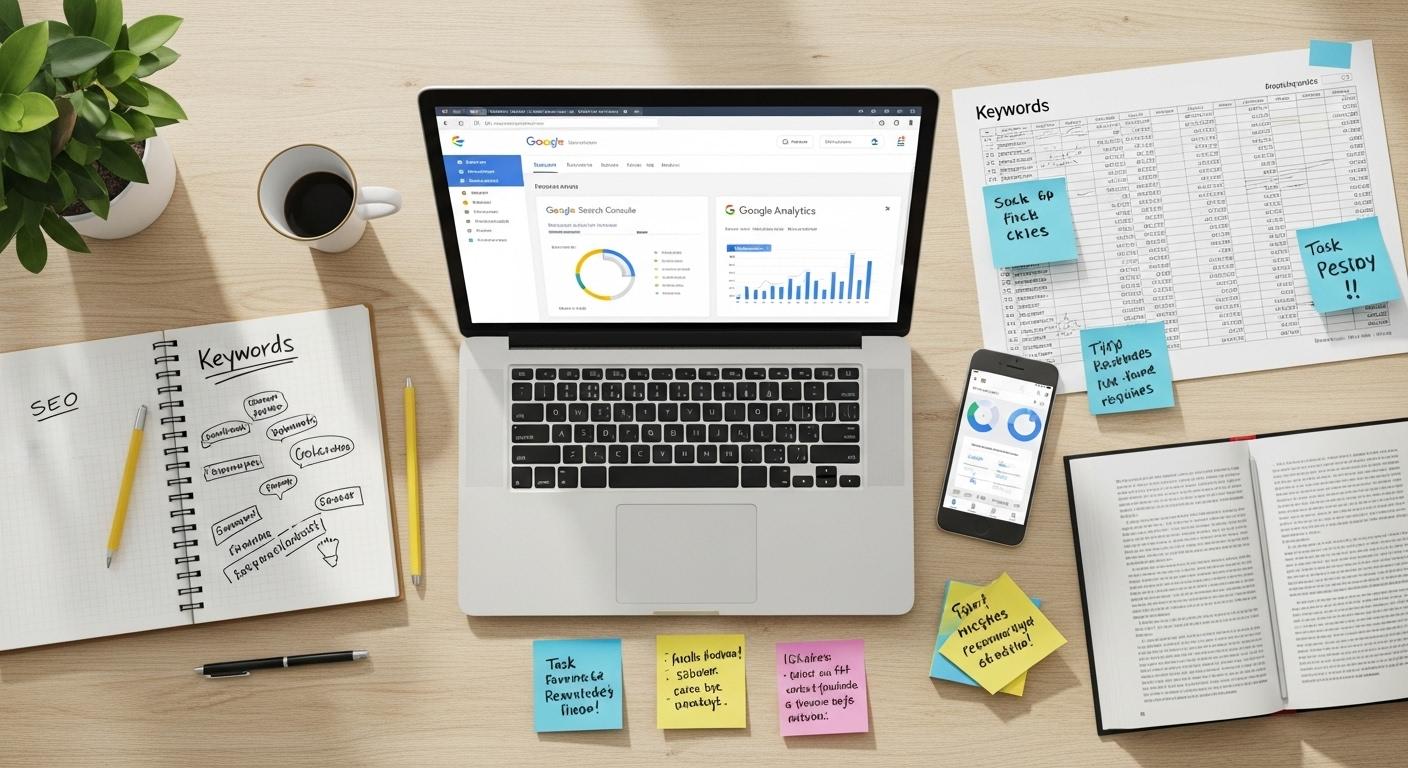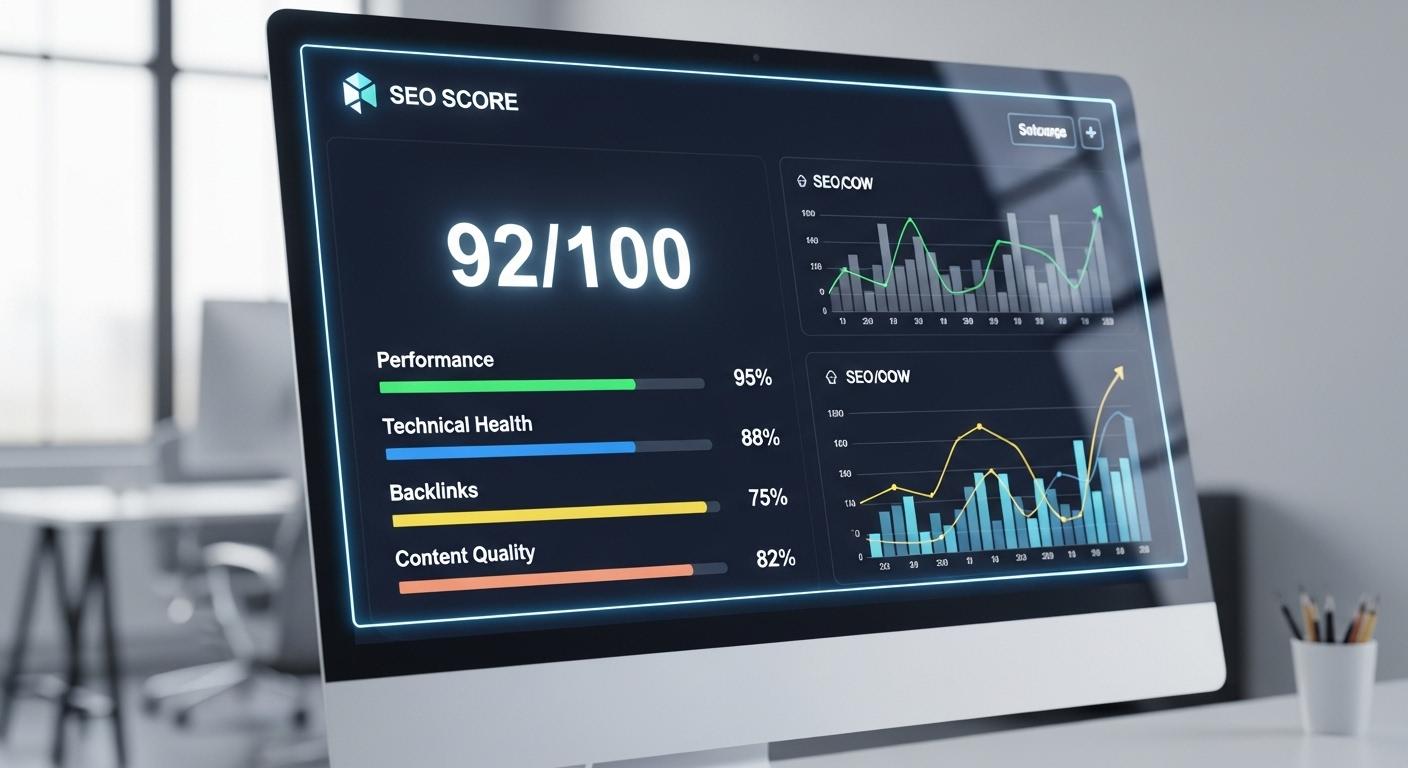
Meta titles and descriptions are critical elements of eCommerce SEO. They help search engines understand your pages while attracting users in search results. These tags directly influence click-through rate (CTR) — a strong title grabs attention, and a compelling description persuades users to click. Higher CTR improves rankings over time because Google rewards pages that users want to visit.
In this guide, we'll explore how to write meta descriptions. You'll learn common mistakes to avoid and discover optimization tips that boost conversions. Clear, keyword-rich titles drive traffic, while persuasive descriptions turn visitors into buyers. Avoid generic or duplicated tags by focusing on value and urgency. Test and refine for best results. Mastering meta tags gives your store a competitive edge.
Why Meta Titles and Descriptions Matter for eCommerce SEO
Meta title and descriptions guide eCommerce SEO success by shaping search visibility and boosting user engagement. Titles tell search engines what your page is about, while descriptions summarize the value you offer. Both appear in search results and directly impact CTR. Strong titles earn clicks, clear descriptions build trust, and high CTR signals relevance to Google, which improves rankings over time.
Unique meta tags matter for every product page. Here's why:
- Avoid Duplication: Duplicate tags confuse search engines and hurt rankings. Each product needs its own unique title and description.
- Target Specific Keywords: Every product should target unique search terms to capture niche searches and qualified traffic.
- Improve User Experience: Tailored tags match buyer intent, reduce bounce rates, and enhance the shopping experience.
- Boost Conversions: Relevant tags attract qualified traffic — shoppers who are ready to buy are more likely to click and purchase.
- Stand Out in Results: Unique tags set your listing apart from competitors and boost CTR.
- Support Site Structure: Clear tags help search engine crawlers index pages properly, strengthening overall SEO.
How to write effective meta titles: Keep them under 60 characters, use the primary keyword early, include your brand name, and make them compelling. Descriptions should be under 160 characters, highlight benefits, add a call to action, and stay unique per page. Treat every product page seriously by investing in custom meta tags, and you'll watch traffic and sales grow.
How to Write Meta Titles That Convert
Meta titles drive clicks in eCommerce by balancing SEO requirements with user appeal. To write titles that convert, follow clear rules and best practices.
How long should a meta title be for SEO? Keep it under 60 characters to avoid truncation in search results. Use this ideal structure: Keyword + Product + Brand. This format builds trust while targeting relevant searches.
Guidelines for creating high-converting titles:
Place the Keyword First: Boost relevance by leading with your target keyword.
- Example: Red Velvet Dress – Elegant Evening Wear | LuxeBrand
Keep the Tone Benefit-Driven: Highlight value rather than just features.
- Example: Wireless Earbuds – 30Hr Battery Life | SoundPro
Add Power Words: Use compelling terms like "Best," "Free Shipping," or "Sale."
- Example: Best Leather Wallet – RFID Protected | UrbanStyle
Include Numbers When Possible: Numbers attract attention and signal specificity.
- Example: iPhone 15 Case – Shockproof Protection $29 | TechGuard
End with Your Brand: Reinforce brand identity and build trust.
- Example: Organic Face Cream – Anti-Aging Formula | PureSkin Co.
Avoid Keyword Stuffing: Keep language natural and readable.
- Bad: Shoes Shoes Running Shoes Sale Cheap Shoes
- Good: Men's Running Shoes – Lightweight Design | SpeedFit
Additional meta title examples for eCommerce:
- Black Heels 40% Off – Free Shipping | FashionHub
- Gaming Laptop RTX 4070 – 16GB RAM | ProGear
Test different variations and track CTR performance. Refine your titles monthly based on data. Strong titles turn searchers into buyers by speaking directly to their needs and desires.
Common Mistakes in eCommerce Meta Titles
Common mistakes in eCommerce meta titles hurt performance by lowering rankings and reducing CTR. Avoid these critical mistakes:
| Mistake | Example | Problem | Fix |
| Keyword Stuffing | Running Shoes Sale Cheap Best Running Shoes | Looks spammy, Google penalizes, users skip | Use one main keyword naturally |
| Duplication | Blue T-Shirt | Red T-Shirt | Green T-Shirt | Confuses search engines, causes page cannibalization | Write unique titles per product |
| Truncation | Premium Organic Matcha Green Tea Powder from Japan – High Quality | Cuts off key info, loses clicks | Keep under 60 characters |
| Missing Brand | Wireless Bluetooth Headphones | Misses trust signal | Add brand at the end |
| No Benefit | Model XYZ Laptop | Boring, no reason to click | Add value: Fast, Lightweight, 12Hr Battery |
These mistakes significantly drop visibility. Duplicate titles cause keyword cannibalization, stuffed keywords trigger spam filters, and overly long titles lose meaning in search results.
Best practices to avoid these mistakes:
- Use product-specific details (color, size, key features)
- Check length using SERP preview tools before publishing
- Audit all product pages monthly for consistency
- Never blindly copy templates across products
- Test and optimize high-traffic pages first
How to Optimize Product Page Meta Titles for Better CTR
Optimizing product page meta tags for better CTR requires blending emotional triggers, power words, and SEO keywords in a way that feels natural. This process ensures every title resonates with the searcher's intent, compelling them to click through to your store.
The most effective titles go beyond mere descriptions — they tap into desires like exclusivity, urgency, or transformation. Use power words such as "luxury," "instant," "limited," or "proven" to spark curiosity and build trust. Place the primary keyword early so both search engines and users can quickly scan and understand relevance.
Matching search intent is crucial:
- Buying-intent searches demand prices, deals, or product benefits
- Research-oriented searches need clarity and detailed information
- Brand searches benefit from strong brand placement upfront
Every title must reflect what the user truly wants at that moment, shifting focus from robotic optimization to human-centered persuasion that turns casual browsers into active buyers.
How to write unique meta descriptions for each product? Let's see:
- Luxury Cashmere Scarf – Ultra-Soft & Warm | SilkRoad Co.
- Instant Whitening Toothpaste – Smile Brighter in 7 Days | GlowDent
- Limited Edition Sneakers – Only 100 Left | HypeStreet
- Waterproof Hiking Boots – Conquer Any Trail | PeakGear
- Organic Matcha Powder – Premium Grade A | ZenTea
These optimized examples demonstrate how emotional hooks, clear benefits, and natural keyword integration create titles that not only rank well but also drive significantly higher click-through rates. User-focused language aligned with intent is the ultimate lever for eCommerce success.
Writing Unique Meta Descriptions for Each Product

Writing unique meta descriptions for each product is essential in eCommerce. Generic descriptions hurt performance, while tailored ones boost relevance and clicks. Every product page needs a distinct meta description to avoid duplication penalties, highlight unique features, and build user trust. Search engines reward specificity, and users trust detailed summaries.
How to write unique and persuasive meta descriptions: Focus on benefits rather than just features. Highlight what sets the product apart using emotional language. Include the main keyword naturally and reflect actual value to the customer.
Ideal character count: 120–160 characters. This fits both mobile and desktop search results. Shorter descriptions risk low impact, while longer ones get cut off.
Include a call-to-action (CTA): Urge action with phrases like "Shop Now," "Discover More," or "Buy Today."
Steps to create winning descriptions:
- Research the product: List key benefits and unique selling points (USPs)
- Know your audience: Speak directly to their pain points or desires
- Start strong: Lead with the most compelling benefit
- Add a CTA: End with a clear next step
- Stay unique: Never reuse descriptions across pages
- Test and refine: Track CTR and update low performers
Custom descriptions turn searchers into buyers. Invest time in crafting each one to maximize conversions and build a stronger SEO foundation.
Meta Titles vs Meta Descriptions — Understanding the Difference
Meta tags and descriptions are essential eCommerce SEO elements that shape how your pages appear in search results. While both influence CTR, they serve distinct roles.
Meta Titles:
- Serve as the clickable headline in search results (displayed in blue)
- Typically 50-60 characters to avoid truncation
- Signal page relevance to both search engines and users
- Directly impact search rankings
Meta Descriptions:
- Provide a summary below the title (up to 150-160 characters)
- Not a direct ranking factor, but it strongly influences CTR
- Entice clicks by previewing content and value
- Build trust through compelling, benefit-driven text
How to write meta titles? Meta titles establish primary relevance through targeted keywords, boosting SEO signals. Meta descriptions expand on this by building trust with value-driven text that aligns with user intent. Together, they reduce bounce rates, improve CTR, and enhance perceived credibility — indirectly supporting SEO performance.
Tips for balancing keywords and readability:
- Prioritize natural flow: Place primary keywords early in titles; weave secondary keywords into descriptions without stuffing
- Stay concise: Titles under 60 characters; descriptions under 160 characters
- Use action-oriented language: Incorporate CTAs like "Shop Now" or "Discover" in descriptions
- Match intent: Align with search queries for maximum relevance
- Test variations: A/B test different versions for optimal CTR
Meta titles hook users, while descriptions convert them. Optimize both for higher visibility and conversions in your eCommerce store.
SEO Tips to Improve Meta Tags and Overall CTR
Boosting clicks starts with strong meta tag optimization. Meta tags act as your store's first impression in search results — clear and relevant tags attract attention and guide users to click. Each tag should match search intent and highlight value. Use primary keywords naturally in titles and descriptions to align with what customers are actively seeking.
How to optimize effectively:
- Write Compelling Descriptions: Keep them between 150 and 160 characters. Use action-oriented phrases like "Shop Now" or "Discover More" to encourage clicks.
- Strategic Keyword Placement: Include your target keyword early in both titles and descriptions to improve visibility and relevance.
- Highlight Product Benefits: Mention unique selling points and specific benefits that differentiate your products from competitors.
- Use Clear Structure: Separate ideas with pipes (|) or dashes (–) for better readability and scannability.
- Optimize for Mobile: Ensure tags display properly on small screens where most shopping happens today.
- Test Continuously: Run A/B tests comparing different titles and descriptions to find what drives the highest CTR.
- Track with Analytics: Use Google Search Console to monitor impressions, clicks, and CTR performance over time.
- Write for Humans: Create engaging copy that appeals to real people, not just search engine algorithms.
How to improve CTR with meta tags: Focus on emotional triggers like "exclusive," "limited time," or "bestseller" to create urgency. Incorporate power words that drive conversions — phrases like "Free Shipping," "New Arrival," or "Top Rated" encourage immediate action.
Continuous testing refines your approach. Analyze which tags receive the most clicks and adjust weaker ones accordingly. A/B testing helps discover the most engaging copy for your specific audience. Track performance over time using CTR metrics to identify trends and opportunities.
Short, keyword-rich phrases often outperform long, generic ones. Combine data-driven testing with creativity for lasting results. Effective meta tag optimization makes your listings stand out in crowded search results, increases clicks, drives more qualified traffic, and ultimately boosts sales.
Need help optimizing your eCommerce meta tags? Our team is here to assist you.
learn with mettevo
view blog


Are You Ready To Grow Your Website?
Understanding the ins and outs of website growth, we help ensure that your site grows over time with ever-increasing reach and accessibility. Not only do we employ the latest digital marketing techniques for driving traffic directly to your website, but our strategies also focus on gaining loyalty from those visitors so they come back again and again.
Leave your contacts to get a comprehensive and aggressive digital marketing plan taking your business to new heights.